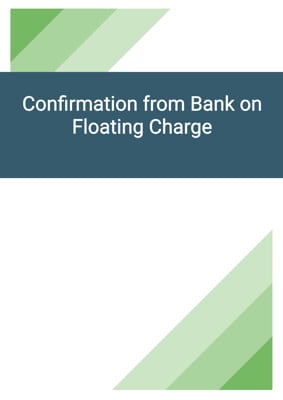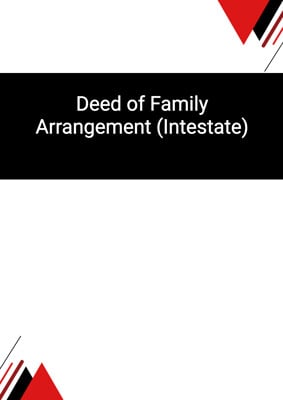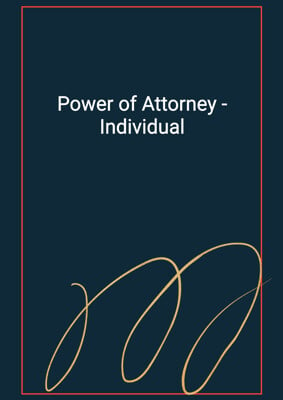
Security Trust Deed
Trustee hold Security for Lenders
Deed of Trust Format of a Security Trust Deed where the Borrower is providing Secured Property on Trust as security for the Facility granted by the Lender(s). The Trustee will hold the benefit of the Security on trust for the Lender(s) as represented by the Agent.
How to Tailor the Document for Your Need?
01
Create Document
Fill in the details of the parties. You can click the "Fill with Member’s Information" button to complete it with information saved to your account.
02
Fill Information
Please fill in any additional information by following the step-by-step guide on the left hand side of the preview document and click the "Next" button.
03
Get Document
When you are done, click the "Get Document" button and you can download the document in Word or PDF format.
04
Review Document
The document should be signed by the authorised signatory (or directors of a company) and witnessed to complete the formality.
Document Preview
Document Description
The Security Trust Deed is a legal document that establishes a trust relationship between the borrower, the agent, and the trustee. It is made to secure the facility agreement between the borrower and the lender. The importance of this document lies in its role in protecting the interests of the lenders and ensuring the repayment of the secured amounts.
The document begins with an interpretation section, defining key terms used throughout the deed. It clarifies the roles and responsibilities of the borrower, the agent, and the trustee. The deed also includes provisions for the appointment and retirement of trustees, as well as the power of attorney granted to the trustee.
The trust created by the deed allows the trustee to hold all covenants, undertakings, charges, assignments, and other security interests made or given under the security documents. The trustee acts on behalf of the lenders and is responsible for enforcing the security in case of default by the borrower.
The deed outlines the covenants and obligations of the borrower, including providing information and executing necessary documents to protect and perfect the security over the secured property. It also specifies the powers of enforcement granted to the trustee, including the ability to place proceeds on a suspense account and make investments.
The deed further details the distribution of proceeds, prioritizing the payment of costs, charges, and expenses incurred by the trustee and the agent. It specifies the order in which interest and principal payments are to be made to the lenders. Any surplus proceeds are to be paid to the borrower.
The deed includes provisions for the release of the secured property upon full payment or discharge of the secured amounts. It also sets out the continuation of the trusts, the perpetuity period, and the duties and supplemental powers of the trustee.
The borrower is required to indemnify the trustee and the agent for any liabilities, expenses, or losses incurred in the execution of their duties under the deed. The borrower is also responsible for paying stamp duties, capital duties, and other similar duties or taxes related to the execution, maintenance, or enforcement of the security documents.
The deed concludes with provisions regarding notices, governing law, jurisdiction, waivers, partial invalidity, counterparts, and the rights of third parties. It also addresses the appointment of a new or further trustee and the language in which the documents should be furnished.
This detailed description highlights the importance of the Security Trust Deed in securing the facility agreement and protecting the interests of the lenders. It provides a comprehensive overview of the document and its various sections and provisions.
How to use this document?
1. Review the interpretation section of the deed to understand the definitions of key terms used throughout the document.
2. Familiarize yourself with the roles and responsibilities of the borrower, the agent, and the trustee as outlined in the deed.
3. Understand the powers and duties of the trustee, including its ability to enforce the security and hold the secured property on behalf of the lenders.
4. Take note of the covenants and obligations of the borrower, such as providing information and executing necessary documents to protect and perfect the security.
5. Pay attention to the provisions regarding the distribution of proceeds, including the priority of payments to cover costs, charges, and expenses.
6. Understand the conditions for the release of the secured property and the continuation of the trusts.
7. Be aware of the borrower's indemnity obligations, including the payment of stamp duties, capital duties, and other taxes.
8. Familiarize yourself with the provisions regarding notices, governing law, jurisdiction, waivers, and the rights of third parties.
9. Understand the process for appointing a new or further trustee and the requirements for language in which the documents should be furnished.
10. Seek legal advice if needed to ensure a thorough understanding of the Security Trust Deed and its implications.





















